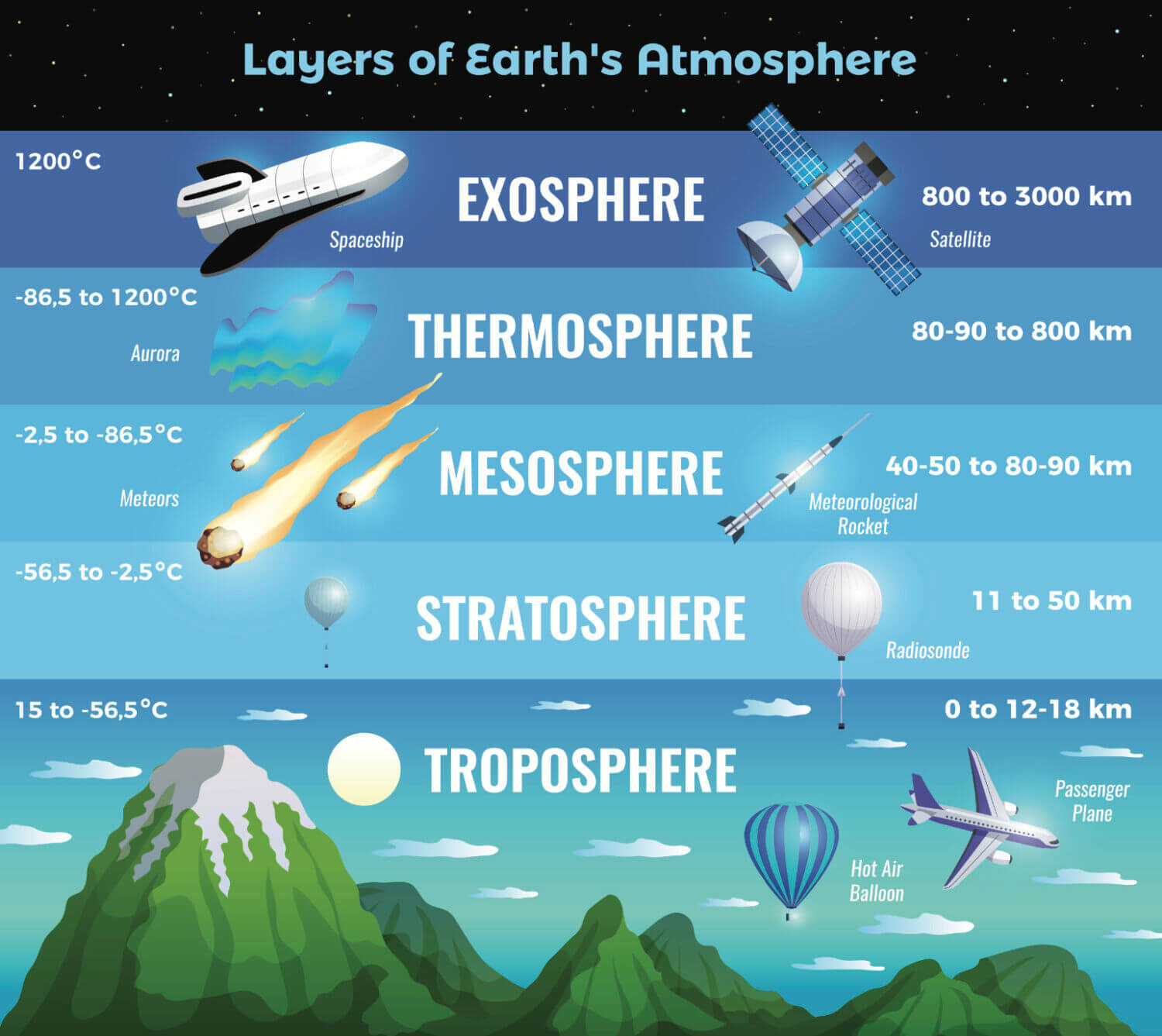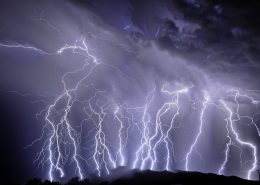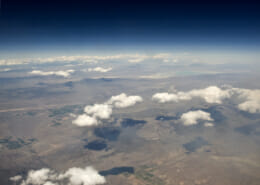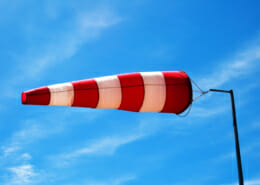What are the Different Layers of the Earth’s Atmosphere?
The Earth has a number of layers of atmosphere which are listed below.
- Troposphere: 0 to 11 km (0 to 7 miles)
- Stratosphere: 11 to 50 km (7 to 31 miles)
- Mesosphere: 50 to 80 km (31 to 50 miles)
- Thermosphere: 80 to 700 km (50 to 440 miles)
- Exosphere: 700 to 10,000 km (440 to 6,200 miles)
Commercial aircraft typically fly in the Troposphere and Stratosphere.
What is the Troposphere?
The Troposphere is the lowest portion of the atmosphere, and it is where the vast majority of weather is found. The height of the top of the Troposphere varies with latitude (it’s lowest over the poles and highest at the equator) and by season (it’s lower in winter and higher in summer). It can be as high as 20 km (12 miles or 65,000 feet) near the equator, and as low as 7 km (4 miles or 23,000 feet) over the poles in winter. In aviation, ISA stipulates the Troposphere ceases at 11,000 m (36,089ft).
The top of the Troposphere is called the Tropopause which is the boundary between the Troposphere and Stratosphere. Jet streams (very strong narrow corridors of air) are typically found in the Tropopause. The Tropopause is generally an ‘Isothermal’ zone where temperature remains constant with altitude.
What is the Stratosphere?
The Stratosphere is sometimes known as the Ozone Layer. This is where Ultra Violet (UV) light from the sun is absorbed by ozone particles and converted to heat. In the Stratosphere, the temperature increase with height (unlike the tropopause where the temperature reduces with height). Some large birds can fly within the Stratosphere such Swans and Vultures.
Commercial aircraft generally fly in the lower levels of the Stratosphere as it contains little moisture and most of the weather (which can cause turbulence) is found in the Troposphere and Tropopause below. Commercial aircraft can’t fly too high within the Stratosphere as their altitude can be limited by the amount of thrust that can be produced by the engines, which decreases as temperature increases.
What is the Mesosphere?
‘Meso’ means middle. The Mesosphere is responsible for protecting the Earth against asteroids and space debris and is where these objects would tend to burn up. The Mesosphere contains about 0.1% of the Earth’s air mass and still has a mix of gases found in the atmosphere. In this atmospheric layer, temperature decreases with height.
At the top of the Mesosphere, the coldest atmospheric temperatures can be found at around -143 °C / -225 °F. Neither military nor commercial aircraft can fly in the Mesosphere due to the lack of air mass, yet the small amount of air there is would still produce too much drag to allow orbit of the Earth.
What is the Thermosphere / Ionosphere?
The Thermosphere is incredibly hot due to the absorption of solar radiation. Temperatures can reach 2,000 °C / 3,600 °F. The Thermosphere is where the Kármán line can be found which defines where ‘Outer Space’ starts at 100 km / 62 miles above sea level. Some satellites, including the International Space Station (ISS) orbit the Earth in the Thermosphere.
The Thermosphere is also known as the Ionosphere due to the presence of Ions within this atmospheric layer. This occurs due to the photoionization of molecules caused by ultraviolet radiation. Some radio waves are reflected by the Ions which is why commercial aircraft can communication through High Frequency to stations beyond the horizon.
What is the Exosphere?
‘Exo’ means outside. The Exosphere is the highest, most outer layer of the atmosphere where the air is extremely thin. It is the transition between the Earth’s atmosphere and the vacuum of space. It is predominantly made up of Hydrogen and Helium but contains trace amount of other gases. It acts as a zone where the Earth’s gravity starts to be felt.
Temperature in the Exosphere varies significantly (between 0 °C and 1700 °C) and is much hotter in the day than night.







 ShutterStock
ShutterStock

